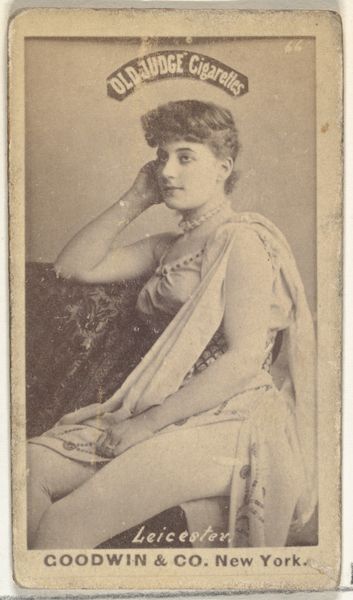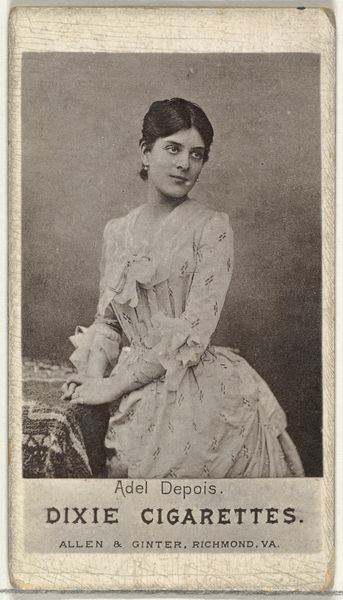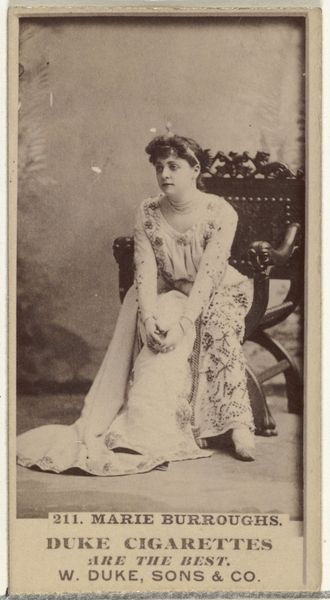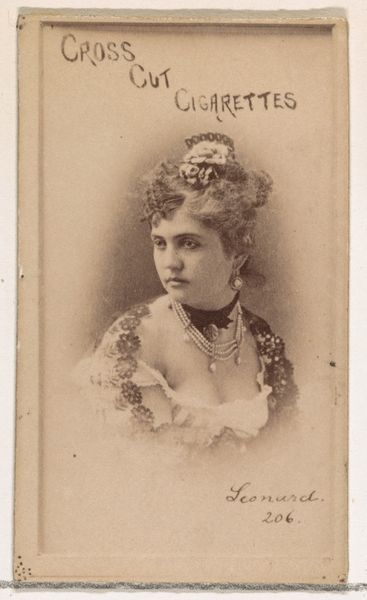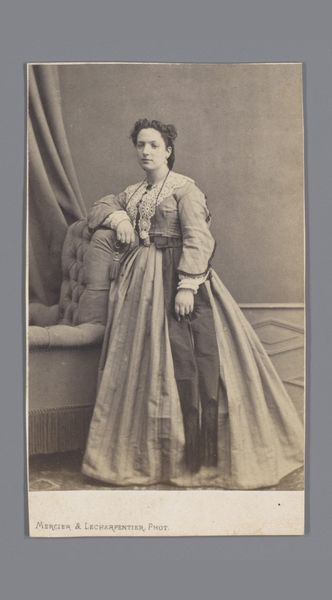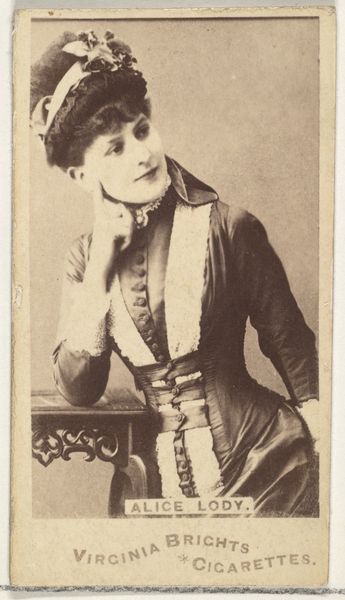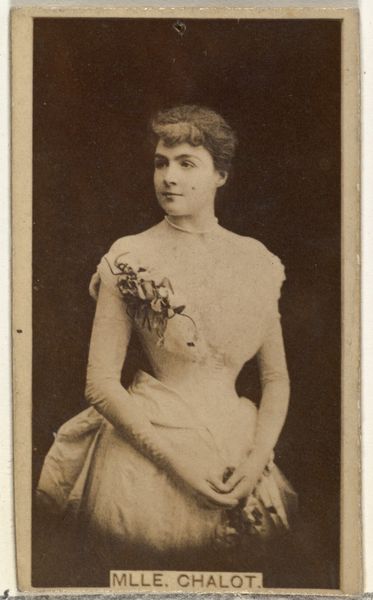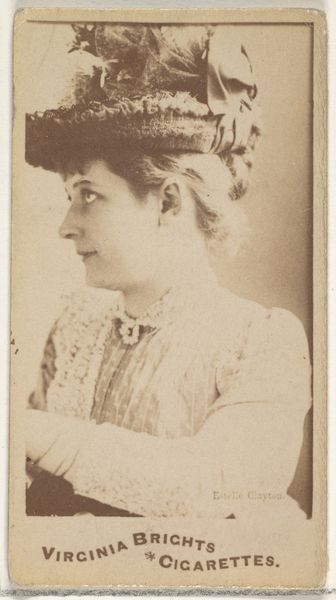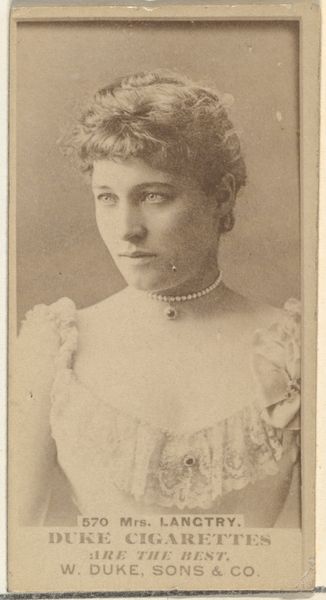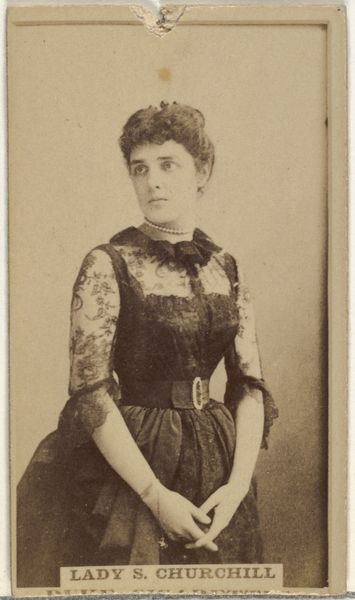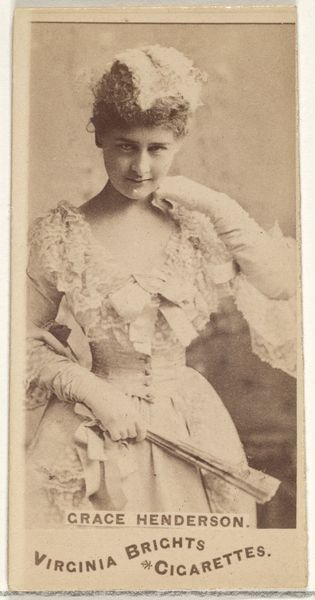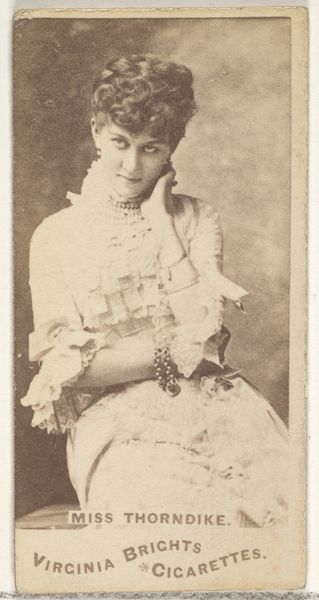
photography
#
portrait
#
photography
#
historical photography
#
historical fashion
Dimensions: height 167 mm, width 109 mm
Copyright: Rijks Museum: Open Domain
Editor: This is a fascinating image, "Portret van een onbekende jonge Ierse vrouw," a photograph taken in 1878. The subject is adorned in a beautiful dress, lots of lace, resting elegantly against what looks like a parlor table. It feels staged, yet intimate. What jumps out at you when you see this photograph? Curator: The material elements really dictate the reading. It is vital we don’t ignore the actual albumen print process. How does photography democratize portraiture and simultaneously participate in the colonial gaze? Editor: Can you explain the colonial aspect of the materials? I hadn't considered that. Curator: The very act of photographing a young Irish woman – presumably, by someone of a different social standing – and then distributing it…consider the labor involved. Who processed the chemicals? Who made the paper? These images were commodities in a global market. It reflects not just artistry, but a complex web of labor and power. Editor: So the pearls, the lace, the elaborate up-do and gown – were they the sitter's, or perhaps part of the photographer's staging to sell an exotic vision? Curator: Precisely! And what does it mean to say she's *Irish*? Is this an observation of fact, or does this add an 'ethnic' gloss to commodify the image for a particular audience? Even her pose is a kind of studied passivity. Editor: That’s eye-opening! I was initially captivated by the beauty of the subject, but your materialist approach reveals a deeper, more complex story about production, power and representation. Curator: By questioning the materials and their journey, we unravel the layers of meaning embedded within even the most seemingly straightforward image.
Comments
No comments
Be the first to comment and join the conversation on the ultimate creative platform.
